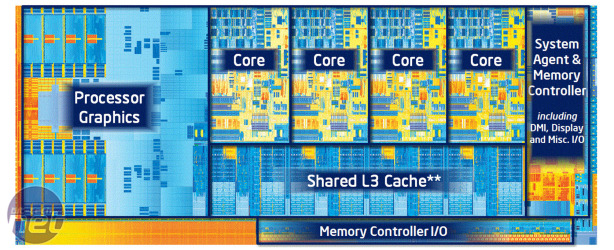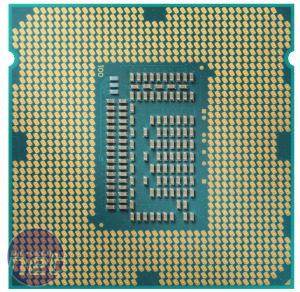
Intel HD 4000 Investigation
Intel has been decidedly bullish about the HD 4000 GPU that’s tucked alongside the four Ivy Bridge based cores of every Intel Core i5-3570K and Core-i7 3770(K) processor. It’s even labelled the switch from 32nm Sandy Bridge to 22nm Ivy Bridge as ‘more than a tick’ - a reference to Intel’s well known tick-tock strategy and an indication that the marketing chaps over in the good ole US of A are really rather pleased with what they’re bringing to market.In truth though it’ll take more than a clever line on a presentation slide to impress us, as Intel’s onboard graphics offerings have often fell short of where we’d like them to be. This is especially true now that AMDs FM1 APUs are in the marketplace, as their onboard graphic cores comprehensively outperformed the HD 3000 GPU that most of Intel’s Sandy Bridge CPUs sport.
So what has Intel done to give it reason to kick up so much fuss over the HD 4000 GPU? Well, for a start it’s added DirectX 11 support, meaning that the HD 4000 is capable of taking advantage of all the lovely shiny features of the API, such as tessellation and high definition ambient occlusion. Importantly it’s also increased the number of shader cores (or as Intel calls them, execution units) from 12 to 16 - a 30% bump.
To help ensure that these extra cores are kept busy, Intel has upped the number of texture pipelines from one to two. The pipelines are largely unchanged from those found in the HD 3000 core, but the increase means that each pipeline is shared by eight cores, rather than 12, leading to an increase in theoretical bandwidth.
Interestingly, a further result of adding this extra pipeline is that Intel have been forced to portion off a tranche of L3 cache specifically for the GPU, as there is little point doubling the number of texture pipelines and leaving the memory bandwidth unchanged. A pot of 256KB of cache is available, though the GPU will of course still need to use a portion of the available DDR3 system memory too.
Aside from these architectural tweaks, the GPU also obviously transitions down onto Intel’s new 22nm Tri-gate, a move which it claims allows it to deliver the same performance at up to half the power consumption.
This doesn’t come without its downsides though, as we’ve (and indeed most others) have found that Ivy Bridge based CPUs have a very high heat density, meaning they can often run warmer than their technically inferior predecessors.
To test the HD 4000 Graphics we pitted our HD 4000 toting Intel i5-2570K up against the processor it’s replacing - the HD 3000 equipped Intel i5-2500k.
We also added an AMD A8-3870K into the mix, as this is likely to provide stiff competition at the low end of the market thanks to its integrated Radeon HD 6550D GPU.
As a final thought we also tested the £30 AMD Radeon HD 6450 discrete graphics card, as it’s cards like this that the HD 4000 is looking to make redundant. This would be no small task however, as the HD 650 boasts 512MB of dedicated onboard memory and a modern GPU design from the Northern Islands family of GPUs.
| Name | CPU Frequency | GPU Frequency | GPU Core Name | TDP | Memory | Production Process | Price |
| Intel Core i5 3570K | 3.5GHz | 650MHz | Intel HD 4000 | 77W | System | 22nm | £170 |
| Intel Core i5 2500K | 3.3GHz | 850MHz | Intel HD 3000 | 95W | System | 32nm | £155 |
| AMD A8-3870K | 3GHz | 600MHz | Radeon HD 6550D | 100W | System | 32nm | £95 |
| AMD Radeon HD 6450 | N/A | 750MHz | Caicos | 27W | 512MB | 40nm | £30 |

MSI MPG Velox 100R Chassis Review
October 14 2021 | 15:04










Want to comment? Please log in.